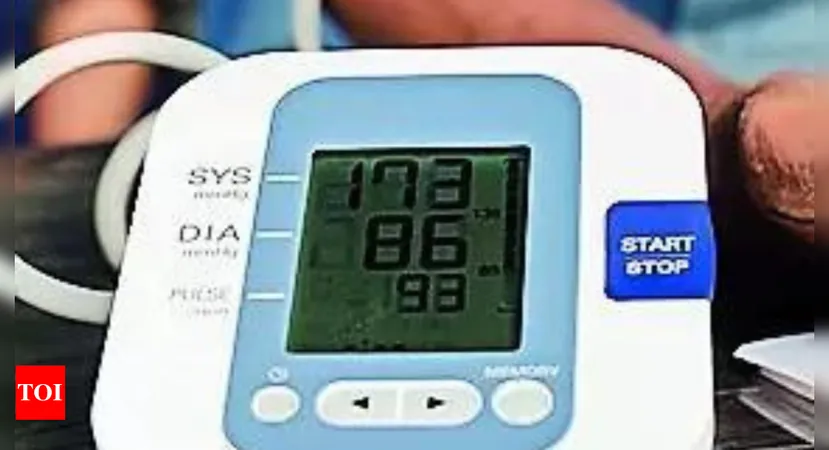
Urgent Call for Enhanced Safety Measures in IV Therapy to Prevent Serious Injuries
2024-11-25
Author: Jia
Introduction
Infiltration and extravasation in intravenous (IV) therapy are critical issues that demand urgent attention in healthcare settings. Infiltration occurs when IV fluid or medication leaks into surrounding tissues, while extravasation specifically refers to the leakage of vesicant drugs that can cause severe tissue damage, including compartment syndrome, blistering, and even necrosis.
The Call for Awareness and Training
Andrew Barton, a nurse consultant specializing in IV therapy at Frimley Health NHS Foundation Trust and the chair of the National Infusion and Vascular Access Society (NIVAS), emphasizes the need for increased training and awareness among nursing staff about these risks. “My ambition is that every hospital will have enhanced safety measures regarding IV therapy,” he stated, underscoring the critical nature of proper education and training regarding infiltration and extravasation.
The Scope of the Issue
Much more than just an oncology hazard, extravasation can happen with various non-cancer IV treatments. Data from NHS Resolution reveals that between April 2011 and March 2021, there were 444 claims related to extravasation, with only about 24% linked to chemotherapy. Other commonly used medications like antibiotics and IV iron have also been associated with significant morbidity due to extravasation injuries. Barton pointed out, “Some of the most common drugs we administer have the potential to cause serious injuries just as chemotherapy can.”
Risks Associated with Specific Medications
Moreover, certain medications pose an increased risk of complications. For instance, antibiotics such as vancomycin and gentamicin, which are highly acidic, can lead to severe tissue damage in the event of extravasation. Similarly, alkaline drugs like phenytoin and several vasopressors present substantial risks. Also noteworthy is the hyperosmolar solution calcium chloride, typically used to treat hyperkalaemia, which can result in long-lasting tissue damage if extravasated.
NIVAS Toolkit for Safety
Recognizing the pressing need for improvement, NIVAS unveiled a comprehensive toolkit in February 2023 designed to bolster patient safety through better practices regarding infiltration and extravasation. The toolkit provides crucial guidance on prevention, recognition, and effective treatment of these injuries.
Advocacy for an Extravasation Lead
As part of the initiative to elevate awareness and prevention methods, Barton advocates for the appointment of an extravasation lead in hospitals. This role would be responsible for spreading awareness and implementing necessary protocols to tackle extravasation issues. Furthermore, NIVAS is urging NHS hospitals to establish standardized reporting of infiltration and extravasation incidents to build a clearer picture of how these events occur.
Innovations in Monitoring IV Therapy
Barton has recently spearheaded groundbreaking research on the ivWatch infusion monitoring device, which promises a revolutionary advancement in detecting infiltration. This device uses a light sensor placed near the IV catheter to identify changes indicative of leakage, issuing timely alerts that allow for immediate intervention. During a recent study involving over 2,000 infusions, the device successfully prevented serious complications in numerous cases.
Conclusion and Future Directions
“The ivWatch device acts as a second set of eyes, alerting nurses to potential infiltration before harm occurs,” Barton noted. This initiative, currently piloted in high-risk areas like maternity and acute care, showcases a proactive approach to patient safety in IV therapy.
As Barton states, “We want every hospital to prioritize the safety of IV therapy as much as they do with preventing infections.” The rising need for greater awareness and structured training around IV administration can significantly contribute to safeguarding patients from potentially serious complications. It’s time to put a spotlight on IV safety—it could save lives!





 Brasil (PT)
Brasil (PT)
 Canada (EN)
Canada (EN)
 Chile (ES)
Chile (ES)
 España (ES)
España (ES)
 France (FR)
France (FR)
 Hong Kong (EN)
Hong Kong (EN)
 Italia (IT)
Italia (IT)
 日本 (JA)
日本 (JA)
 Magyarország (HU)
Magyarország (HU)
 Norge (NO)
Norge (NO)
 Polska (PL)
Polska (PL)
 Schweiz (DE)
Schweiz (DE)
 Singapore (EN)
Singapore (EN)
 Sverige (SV)
Sverige (SV)
 Suomi (FI)
Suomi (FI)
 Türkiye (TR)
Türkiye (TR)